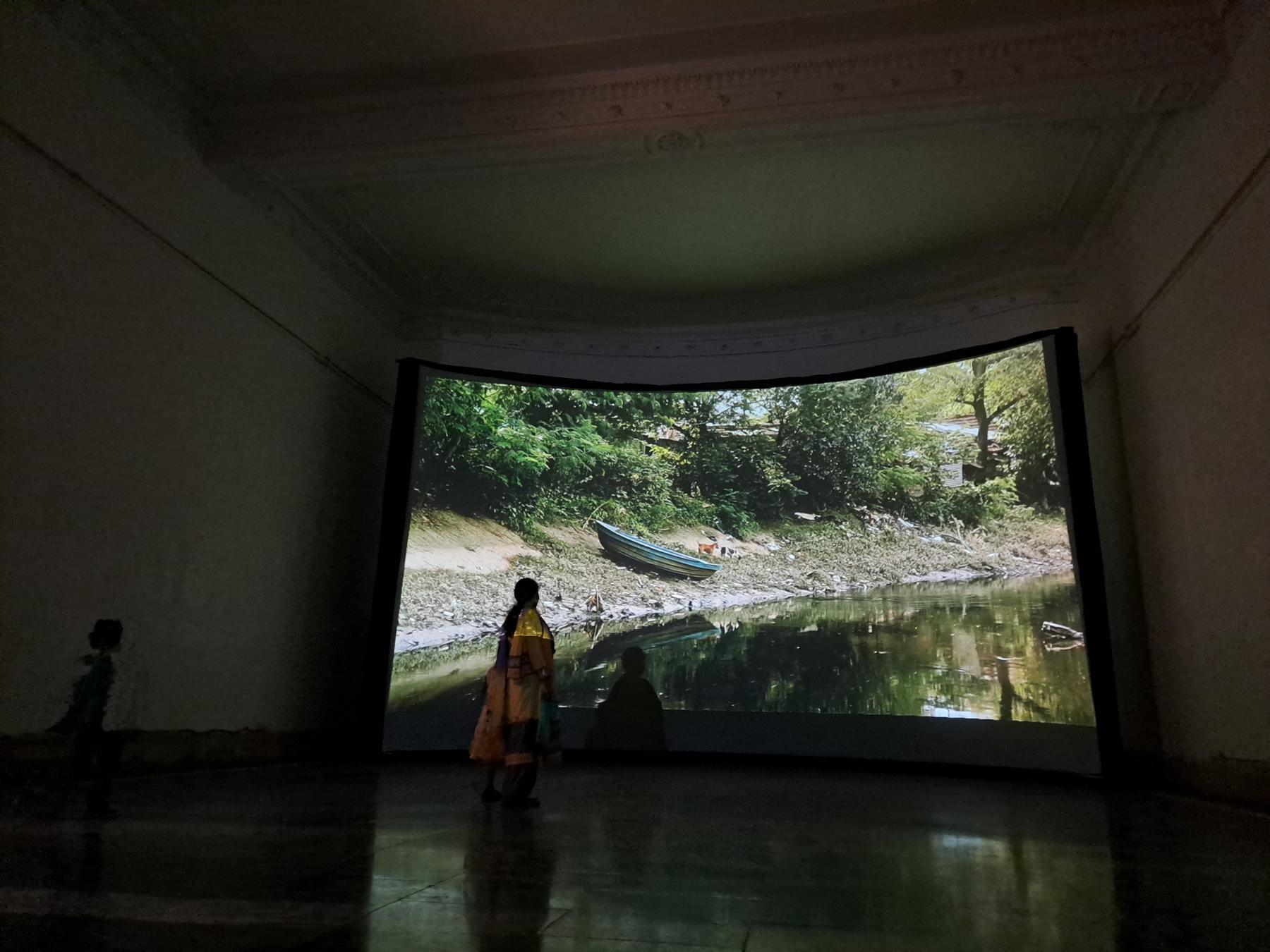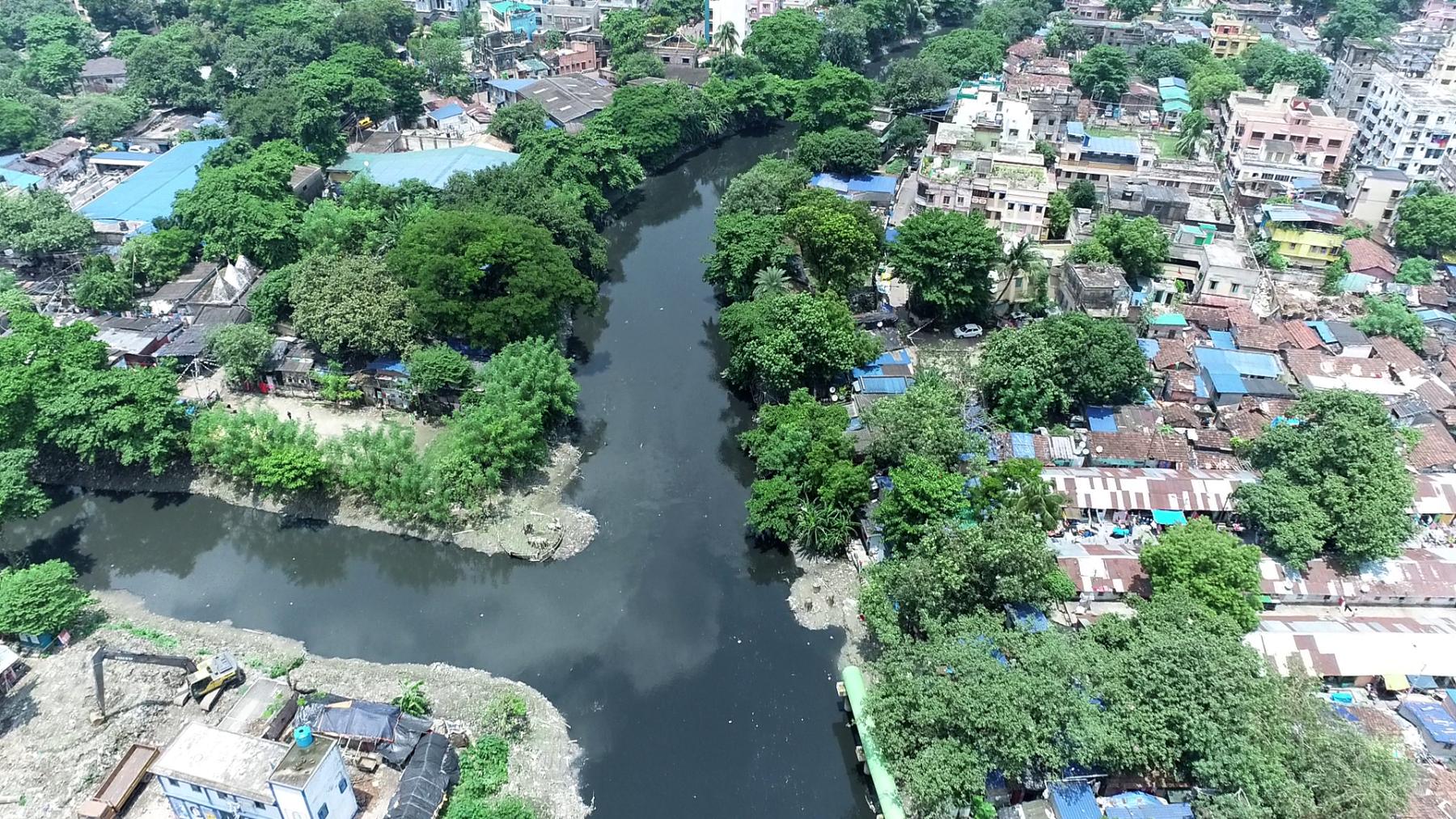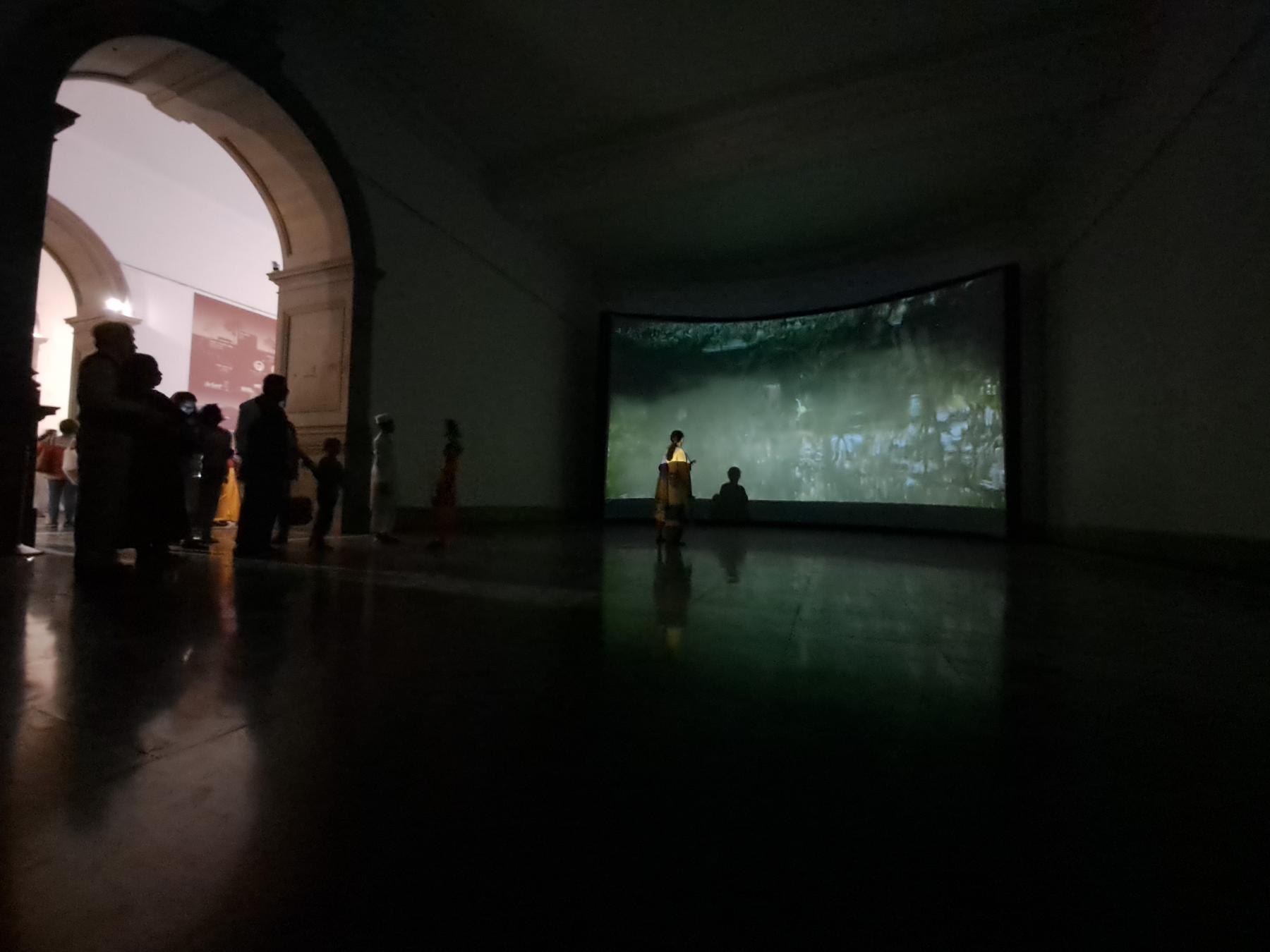And Quiet Flows the Adi Ganga: Re-imagining Urban Space through Riverine Ecology
A narrow channel of water flows from the Hooghly river towards the Sundarbans, cutting through neighbourhoods along the southern extremes of Kolkata. Its existence has repeatedly been called into question, with urban infrastructure projects frequently threatening to engulf it, yet somehow it has survived as something of an ecological ruin. The channel, known as the Adi Ganga between the fifteenth and seventeenth centuries, was the “main flow of the Hooghly River,” which gradually dried up due to natural reasons. In the 1770s, William Tolly recognised the benefit of the channel as a possible route for trade and transportation, excavating it at his own cost. The Adi Ganga was maintained with reasonable efficiency until the mid-twentieth century, after which it receded to the margins of the urban imagination and municipal attention.
. British Library..jpg)
View of the Canal at Kali Ghat. (Samuel Bourne. 1865. Photographic print. Image courtesy of British Library.)
Madhuja Mukherjee’s installation, Kolikatar Nakshi-kotha—a play on nakshi-katha or embroidered quilts and kotha or words—was an attempt to create a visual narrative of the channel, using it as both “route and method for revisiting and remapping the city.” Exhibited at the Victoria Memorial Hall, Kolkata, and implemented by India Foundation for the Arts under their Archives and Museums programme, with support from Goethe-Institut/Max Mueller Bhavan, New Delhi, her longer engagement with the archives is as a part of the Route no. 033 project. Mukherjee “takes the metaphor of the rhizome, made popular by the theorists Deleuze and Guattari in 1980, as its point of departure, both conceptually and visually…to construct a centre-less map of the city.”
. Digital image courtesy author..jpg)
Detail from Plan of Calcutta, Conservancy Department (1854–1874. Digital. Image courtesy of the author.)
The thirty-three minute film played on a curved screen in one of the grand halls of the VMH between 18 November and 24 December 2022, marked off from the on-going exhibitions by an unobtrusive standee that explained the project’s premise. It played on a continuous loop with no beginning, middle or end, in effect, questioning the linear spatial narrative of the channel implied by any cartographic representation.

Kolikatar Nakshi-kotha (Madhuja Mukherjee. Victoria Memorial Hall, 2022. Installation view. Image courtesy of the artist.)
Kolikatar Nakshi-kotha begins where the channel is at its widest—near Hastings or Khidirpur—as it branches off from the Hooghly. Images of steamers are quickly replaced by those of bamboo scaffoldings, leaky drainage pipes, and makeshift nets: semi-formal structures with cracks and crevices through which fragments of the dispirited river flow grimly. Viewers who are used to low-angle shots of the Howrah Bridge, a common feature in films, may feel justifiably deflated seeing these less celebrated structures dominating a landscape that is impossible to romanticise.
. Wikimedia, CC BY-SA 4.0..jpeg)
Adi Ganga beside Gopal Jew Mandir, Tollygunge (Arup1981. 2014. Digital photograph. Image courtesy of Wikimedia, CC BY-SA 4.0.)
Commuters who use these bridges to cross the Adi Ganga on a daily basis, know that it is best to avoid looking at the channel. Along some stretches, they are even conditioned to guard their nostrils from the putrid smells that emanate from the channel. Although the Adi Ganga’s presence is implied by the existence of these bridges, many inhabitants of the city live in successful denial. Gentrified neighbourhoods, clubs, and hotels that have mushroomed along its banks studiously turn their backs and noses to the Adi Ganga.

Still from Kolikatar Nakshi-kotha (Madhuja Mukherjee. 2022. Image courtesy of the artist.)
Mukherjee’s camera is unrelenting as it cautiously moves along the slippery banks and moss-covered steps, taking the viewer right down to the belly of the beast. Bird-like insects, or insect-like birds, flit about its surface, while an occasional dog can be seen half-submerged in sludge, searching for some scrap of food.
Tests conducted by the West Bengal Pollution Control Board in June 2021 revealed that a substantial stretch of the channel contained no dissolved oxygen, an absolute necessity for the survival of aquatic life. Poignantly, the surface water of the channel is entirely opaque throughout the film; its thick ripples, rather than reflect its surroundings, seemingly absorb their dull shadows.
. Wikimedia, CC BY-SA 4..jpeg)
Adi Ganga or Tolly’s Nullah (Sumit Surai. 2014. Digital photograph. Image courtesy of Wikimedia, CC BY-SA 4.0.)
Curiously, the visual narrative is silent on a few inalienable aspects of the Adi Ganga. Firstly, the intersection between human lives and the river is barely addressed; while there are a few shots of women filling water bottles or children playing in lanes adjacent to the channel, there is barely any mention of the livelihoods or professions that depend on the channel for resources. In the inaugural discussion around the installation, Mukherjee points to the “ethics and limitations” in making a film that prevents one from including unsuspecting individuals within the visual frame, without their consent.
The concern is valid: what is the alternative to ethnographic or tokenistic representations of passive subjects on the one hand, and the erasure of human lives from a landscape on the other? Perhaps, like Abhinava Bhattacharyya's Jamnapaar (2017), which looks at a similarly degraded stretch of the Yamuna, the lives entangled with the river's course could be incorporated within the narrative. Admittedly, this would require a longer and deeper engagement, which may only be possible as the project evolves.

Still from Kolikatar Nakshi-kotha (Madhuja Mukherjee. 2022. Image courtesy of the artist.)
Secondly, the narratives of urban displacement and resistance, particularly during the acquisition of land for the Metro Railway works in the early-2000s, find no place in the documentary except, perhaps an ironic comment through a shot taken from the overhead Metro carriage.
The over-reliance on drone shots that dominate the last two-thirds of the visual narrative were formally troubling. While the bird’s-eye perspective offers a clear sense of the channel’s path through and beyond the city limits, serving as the dividing line between highly gentrified neighbourhoods and slums, it risks complicity in the fraught history of optical politics in mapping territories from high altitudes. Even in the early 1910s, colonial surveyors in India were keenly aware of the trauma caused to locals by mapping geographic territory from above through triangulation, and advised police protection against possible hostility. It echoes the totalising perspective of our present through the likes of Google Maps. One wonders if the narrative would have lost much—apart from the problematic pleasure of aerially viewing urban landscape, thus reducing lived experiences to flat, cartographic representations—had the film kept drone shots to a minimum, perhaps only to establish socio-economic segregation in the city.

Spectators viewing the installation at the VMH (VMH, 2022. Image courtesy of Madhuja Mukherjee.)
Decentring maps can take many forms. Kolikatar Nakshi-kotha questions the knowledge-claim of cartography by placing its viewers in an almost nameless landscape. This discomfort was palpable in the questions following the inaugural viewing at VMH, where Mukherjee repeatedly defended her choice not to label the places through which the channel flowed. For most visitors, museums like VMH are sites of unidirectional knowledge transmission. It is thus all the more telling for an installation (indeed, an intervention) to provoke viewers into accepting a sensory experience of a relatively unfamiliar urban formation, rather than “educating” them through a verbal, historical, or overtly socio-environmental narrative. It would be exciting to see how the project evolves in connection with other, similar attempts to re-map Kolkata against the archival grain.
Click here to read about Madhuja Mukherjee’s work, Deep6. To read more about image making around cityscapes and ecology, click here, here and here.




